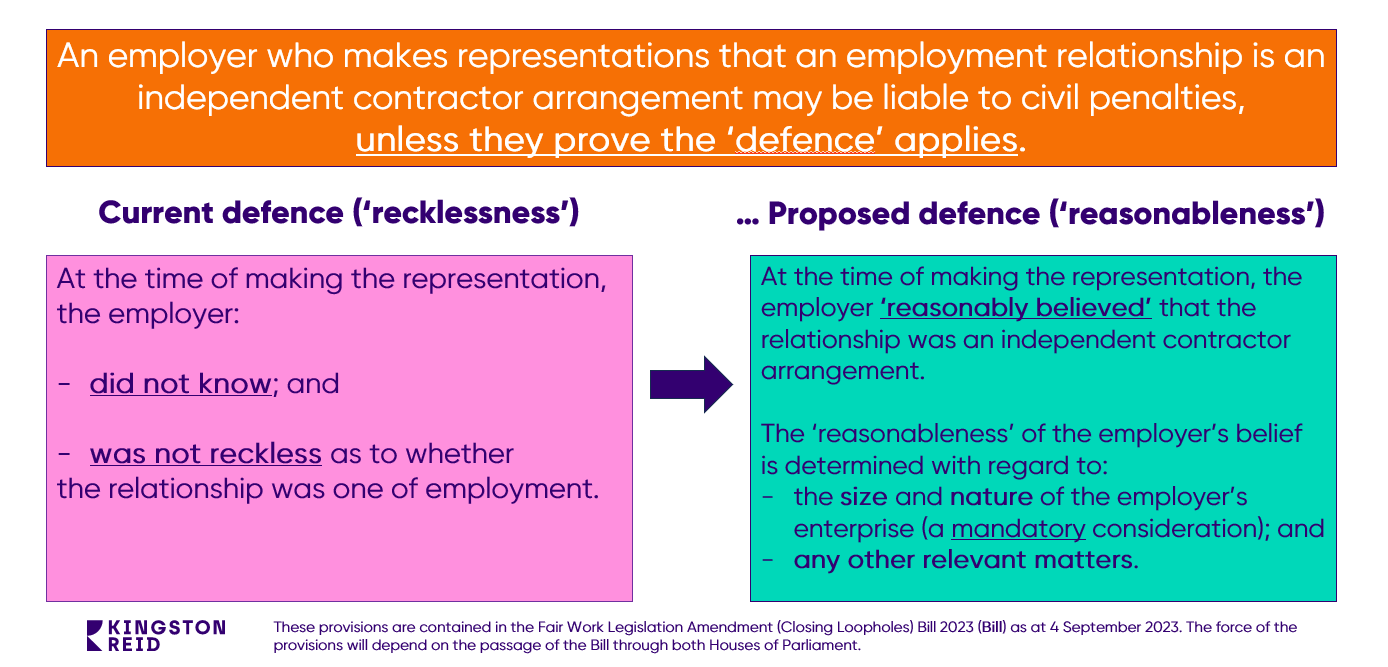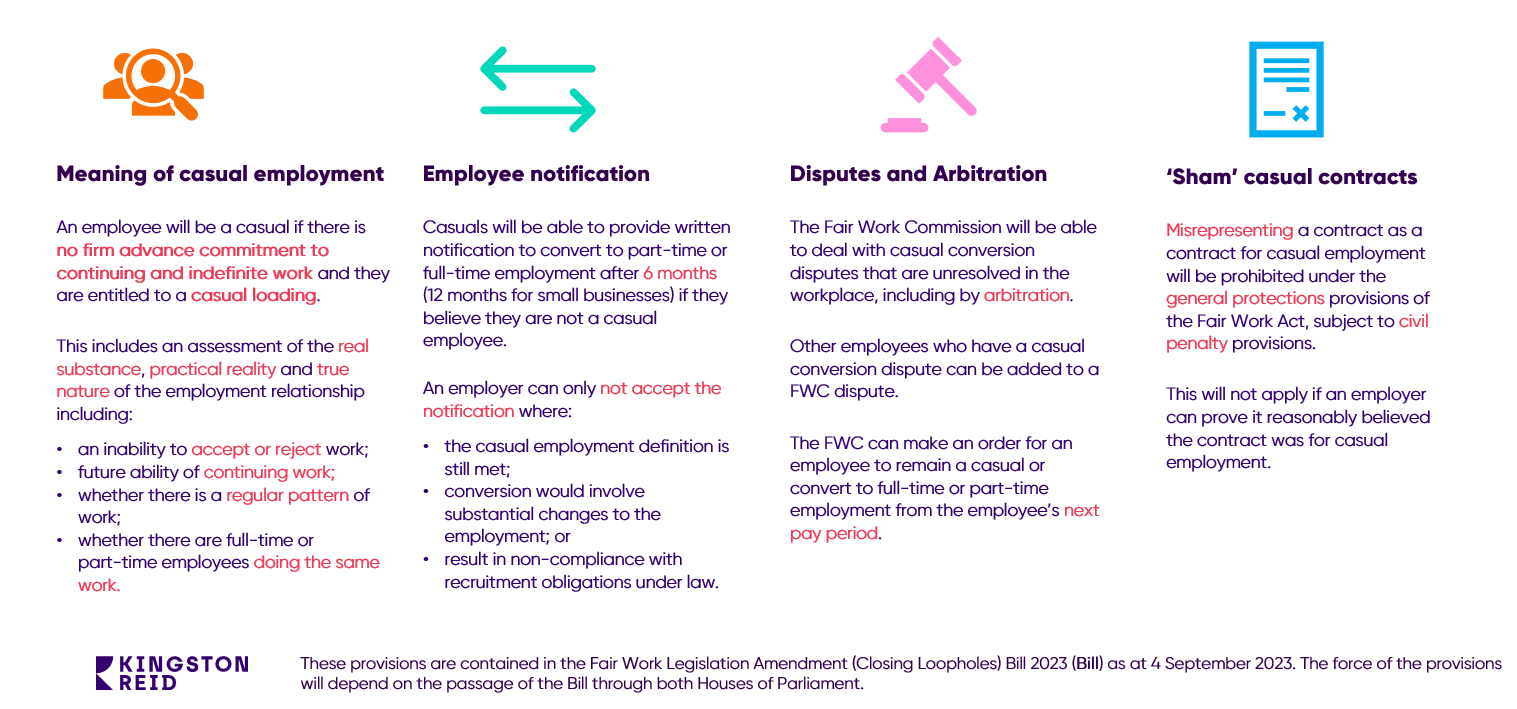October 12, 2023
The Secure Jobs Better Pay amendments to the Fair Work Act 2009 (Cth) (FW Act) introduced a new set of provisions to deal with “intractable” bargaining (replacing the previous serious breach declaration provisions), which took effect in June 2023. Under that scheme, once the minimum bargaining period has ended (typically 9 months after the day bargaining starts, unless a later alternative date under s235(5) applies) and upon application by a bargaining representative, the Fair Work Commission (FWC) could make an intractable bargaining declaration if it is satisfied that the criteria outlined in s235(1) have been met.
Given the nature of the United Firefighters Union of Australia (UFU)’s application, the circumstances leading up to the FWC’s declaration were complex and protracted, dating back to when Fire Rescue Victoria (FRV) first absorbed functions of the Metropolitan Fire and Emergency Board and the Country Fire Authority in mid-2020.
From that time, an ‘interim’ agreement for operational staff was introduced whilst bargaining took place between FRV and the UFU for a new agreement. Whilst informal discussions commenced shortly after the transfer in July 2020, a notice of representational rights was not issued until April 2022, once the FRV had obtained government approval to commence formal bargaining.
In the intervening period however, ongoing discussions had been occurring between FRV and UFU including in relation to an ‘efficiencies’ allowance said to arise under Pillar 3 of the Victorian Government’s then-in-force 2019 Wages Policy (Efficiencies Allowance), which in effect would enable those covered under the agreement to share in cost savings obtained through agreed efficiencies arising from the absorption of both the Metropolitan Fire and Emergency Board and the Country Fire Authority.
Bargaining disputes between 2021 to 2023
During this period, several disputes were filed in the FWC and a number of conferences were conducted. Relevantly, a dispute was lodged by the UFU in respect of the efficiencies issue, which led to a series of conferences being conducted in late 2021 to enable the parties to engage in costing the proposed Pillar 3 efficiencies.
The UFU subsequently outlined its claim for the Efficiencies Allowance in a s739 application. However, before that application was heard, it filed a further (s240) dispute in relation to nine items (one of which was ‘wages and allowances’), leading to a further series of FWC conferences. After the Minister for Emergency Services intervened, the issue of the Efficiencies Allowance was ultimately left to be resolved by the parties through further bargaining.
The 2023 Wages Offer – an ‘unbridgeable’ distance
In March 2023, the FRV put forward its wages offer to the UFU, which included modest wage increases and a once-off payment, but not the Efficiencies Allowance as the Victorian Government did not authorise the FRV to do so, consistent with its new 2023 Wages Policy and Bargaining Framework which was introduced around this time. On this point, the FRV’s position was that it had consistently maintained that wages and allowances were subject to Government authorisation and applicable Wages Policy.
As tensions escalated, the UFU purported to accept the FRV’s wages offer, but subject to the determination of the various efficiencies by the FWC at ‘no less than $117M”, which once determined (for the purposes of the allowance), should be backdated to the start of the proposed agreement. When FRV responded that it was unable to finalise bargaining, the UFU filed its application for an intractable bargaining declaration, in respect of which the FRV submitted that the distance between the parties on the issue of wages and allowances was ‘currently unbridgeable’, and as such, the application for a declaration was not opposed by FRV.
Statutory criteria for making a declaration
In order for the FWC to make an intractable bargaining declaration under s235 of the FW Act, it must be satisfied that:
- it has dealt with the dispute about the agreement under s240 and that the applicant (in this case, the UFU) participated in the FWC’s processes in doing so;
- there is no reasonable prospect of agreement being reached if the declaration is not made; and
- it is reasonable in all the circumstances to make the declaration, taking into account the views of all the bargaining representatives for the agreement.
The FWC’s considerations
The decision sets out some useful observations on how the FWC will determine whether it can be ‘satisfied’ as to each of the abovementioned criteria. Importantly, it notes that for the purposes of applying section 235 of the FW Act, the FWC’s exercise of discretion is broader in relation to prescribed matters of ‘opinion, policy or taste’.
Whilst the first criterion set out above requires only a finding of fact, the second involves an evaluative judgment by the FWC as to whether there is ‘no reasonable prospect’ of agreement if a declaration is not made. Unpacking that double-negative, the FWC need not be convinced that agreement will never arise, but that it is rationally improbable to the point that there is not a reasonable chance of agreement. Crucially, the FWC has indicated that this state of satisfaction is unlikely unless there has been a protracted bargaining period and the parties have exhausted all reasonable efforts (noting in this case, the parties had attended a dozen or so conferences in the period leading up to February 2023 alone).
In relation to the third criterion, it is noteworthy that the FRV (and the Minister, intervening) agreed that bargaining had reached an impasse and supported a declaration being made. This feature of the proceedings (which is unlikely to be the status quo in other applications) is important, given that the views of all the bargaining representatives must form part of the FWC’s evaluative judgment as to reasonableness.
Contrast this with the first intractable bargaining declaration case brought by Virgin Australia Regional Airlines when, during the running of the case, Virgin agreed to further bargain with the relevant unions, thus effectively scuttling its own application. Of course, the likelihood in a contested application will be that there are strongly different views amongst bargaining representatives as to the status and utility of further negotiation.
In the present case however, and in the absence of an opposing view in relation to the UFU’s application, the FWC had regard to:
- the nature of the firefighting services provided by FRV, being critical to public safety;
- that bargaining had been occurring (albeit in various forms) for three years or so; and
- that the parties would be ready for any further arbitration to follow, as the dispute had already been programmed for hearing (for which the parties had commenced preparation),
and, having been satisfied of the necessary criteria (and not identifying any other matters weighing against), made its first intractable bargaining declaration, imposing a post-declaration negotiating period of two weeks, to enable the parties to further narrow the issues requiring arbitration.
Final Comments
Whilst it was not considered to be relevant in this case, the Full Bench did briefly address an important jurisdictional consideration for parties who find themselves inching towards a bargaining stalemate.
Firstly, it must be noted that (existing) s240 provides the FWC with a broad range of powers to assist bargaining representatives with any dispute that arises in bargaining that they are unable to resolve, which includes conducting conferences, mediation, conciliation, making a recommendation, expressing an opinion, or conducting arbitration (by consent). Further, applying to the FWC to deal with a dispute under section 240 (and participating in the resultant process) is a necessary step that must occur prior to applying for an intractable bargaining declaration under (new) s235.
In the UFU decision, the Full Bench has clarified the narrower operation of section 235(2) which requires the FWC to be satisfied that it has dealt with ‘the’ dispute, and not simply ‘a’ dispute under s240, confirming that the relevant bargaining dispute dealt with under s240 “must be the same as the dispute which is said to have caused bargaining to become intractable…”.
In light of the steps to follow the making of an intractable bargaining declaration, this is an important jurisdictional consideration that warrants close scrutiny (in respect of both s235 and s240 applications more broadly), particularly if various disputes have arisen in relation to a range of issues over a protracted bargaining period. For now, it remains to be seen whether bargaining representatives will attempt to cast their s240 nets more broadly when characterising the nature of ‘the’ dispute to be dealt with by the FWC with an eye on the prospect of making an application for an intractable bargaining declaration down the track, if necessary.
A final, practical issue that arises concerns how the FWC will evaluate any jurisdictional objection to a s235 application, as to whether or not it is, in fact, ‘the’ dispute that is said to have caused bargaining to have become intractable. Given the range of ways in which the FWC may deal with a dispute under s240 – some of which are confidential and/or without prejudice – it is unclear how the FWC might do so without requiring the parties to waive or otherwise impugn the confidentiality of those processes (short of having the relevant FWC Member form part of the Full Bench convened in the event such an objection is raised).
Given the active role being played by the FWC at present in relation to other high profile and protracted industrial negotiations, we may ultimately not need to wait very much longer for further guidance from the Full Bench on this front.


